More than two million passengers traveled from Antwerp to North America aboard Red Star Line’s ocean steamers. The Red Star Line Museum focuses on the story behind the people who embarked on the long journey across the Atlantic Ocean.
The Red Star Line

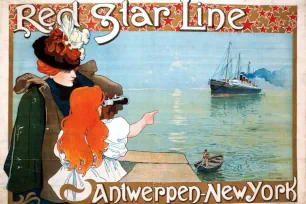
The Red Star Line was a transatlantic ocean passenger line that operated from 1872 until 1935 and was headquartered in Antwerp. Red Star Line was only a trade name, the company running the line was officially named “Société Anonyme de Navigation Belge-Americaine” (SANBA). Their ships were recognizable by the huge red stars that were painted on the funnels of the ocean steamers.
During its peak years, the company transported more than 100,000 passengers per year. Many of these passengers boarded one of Red Star Line’s many ocean liners with destination New York City or Philadelphia. Most hailed from Eastern and Southern Europe and were in search of a better life in the New World.
After the United States Congress introduced a bill to limit the number of immigrants, the number of passengers plummeted. The Great Depression added to the malaise, and in 1935 the Red Star Line became insolvent and sold off its assets.
The Museum

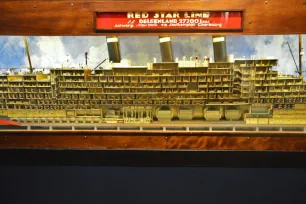

The museum is the mirror image of the Ellis Island Immigration Museum, where many of the passengers on the Red Star Line ships arrived. The museum’s focus is on the stories of the emigrants who traveled on the ships, rather than the Red Star Line or its ships.
The emigrants came from all over Europe (less than 10% came from Belgium) and the museum follows their footsteps from the moment they booked their one-way trip at the travel agency until their arrival in the New World. Everyday objects such as suitcases, official documents and photographs bring the emigrants’ stories to life. Paintings by Eugeen Van Mieghem portray life in the harbor.

The museum also sheds some light on the living conditions aboard the ocean liners. A cross-section model of the Belgenland II highlights the social divide on the ships. While the conditions for ‘steerage’ passengers on the lower decks were less favorable, they were not as bad as they were often portrayed in the press, since sick people were refused entry to the U.S. and had to be returned on the shipping company’s expense!
While the museum mainly focuses on the lives of ordinary immigrants, there were also famous people on board, including Albert Einstein, who traveled three time on the Red Star Line; the final time in 1933, after he learned that his property in Germany had been confiscated.
Another famous passenger was Fred Astaire, who arrived in 1892 in New York with the Westerland, one of Red Star Line’s 23 ships.
And the musician Irving Berlin, composer of ‘White Christmas’, was just five years old when he was a passenger in 1893 on the Red Star Line ‘SS Rijnland’ with destination New York City. The museum has his piano on display.
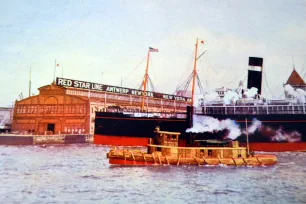
The Buildings
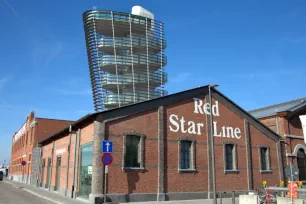
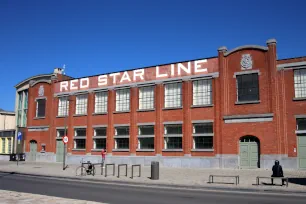
The museum is housed in a complex that was used by the Red Star Line partly as a depot, partly as a medical and administrative center. The main building, which dates from 1922, included showers to disinfect third class passengers. They were deloused and underwent a health inspection. Their papers were also examined before they were allowed to embark on one of the ocean liners moored nearby.
After Red Star Line discontinued its service in 1935 the buildings were adapted for other uses and over time, were abandoned. The buildings and their maritime history was almost forgotten until, in 2000, the city council decided to protect the Red Star Line buildings. The decision coincided with the start of the gentrification of the neighborhood, which generated an increased interest in its history.
Four years later, the city council launched the idea to create an emigration museum housed in the former buildings of the Red Star Line. They acquired the complex and a team of architects was assembled to restore all three buildings. The team restored the buildings to their original appearance, except for the former chimney, which was replaced by a modern look-out tower shaped like a ship’s funnel. Construction started in 2010 and three years later, on 28 September 2013, the museum was officially opened by the Belgian monarch.

